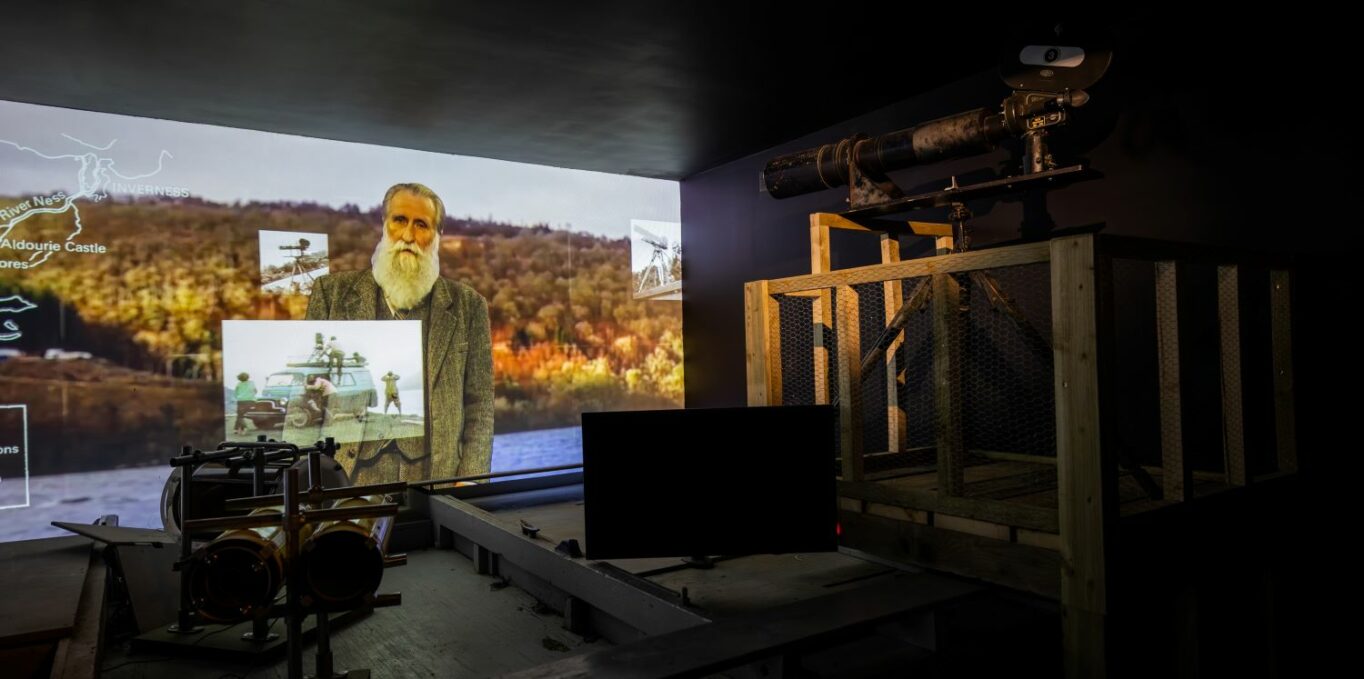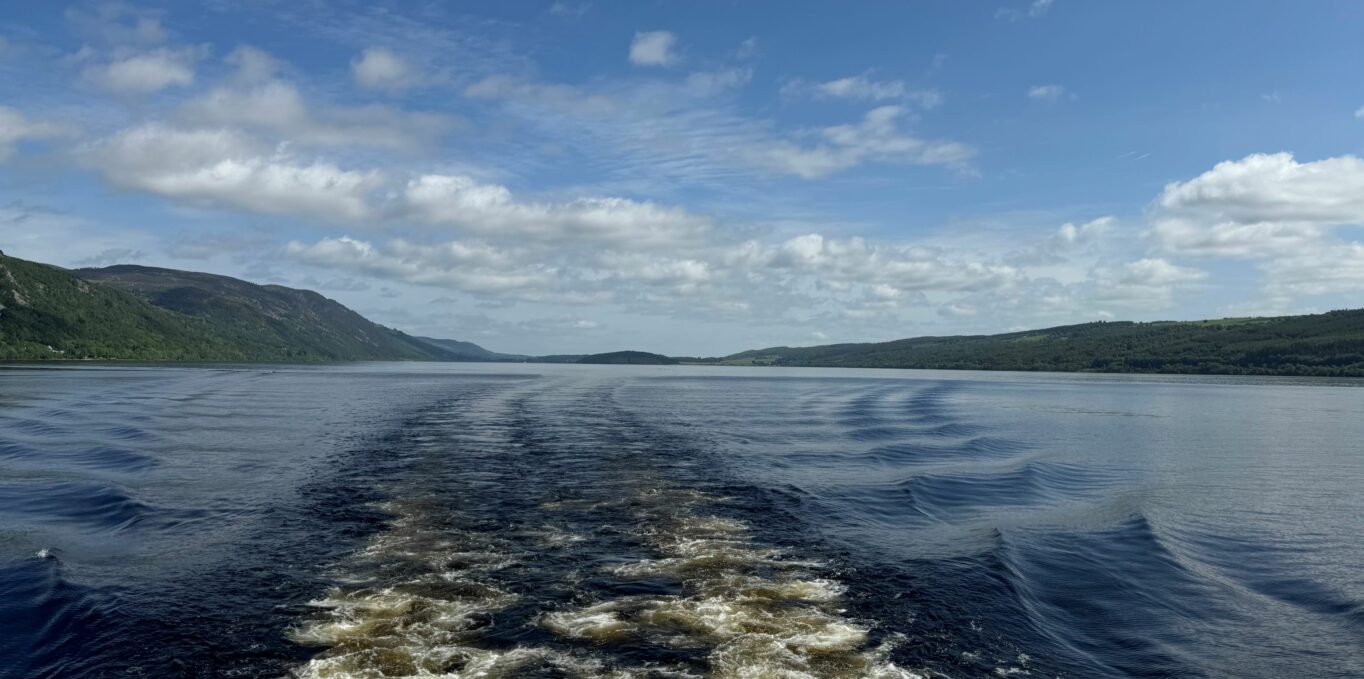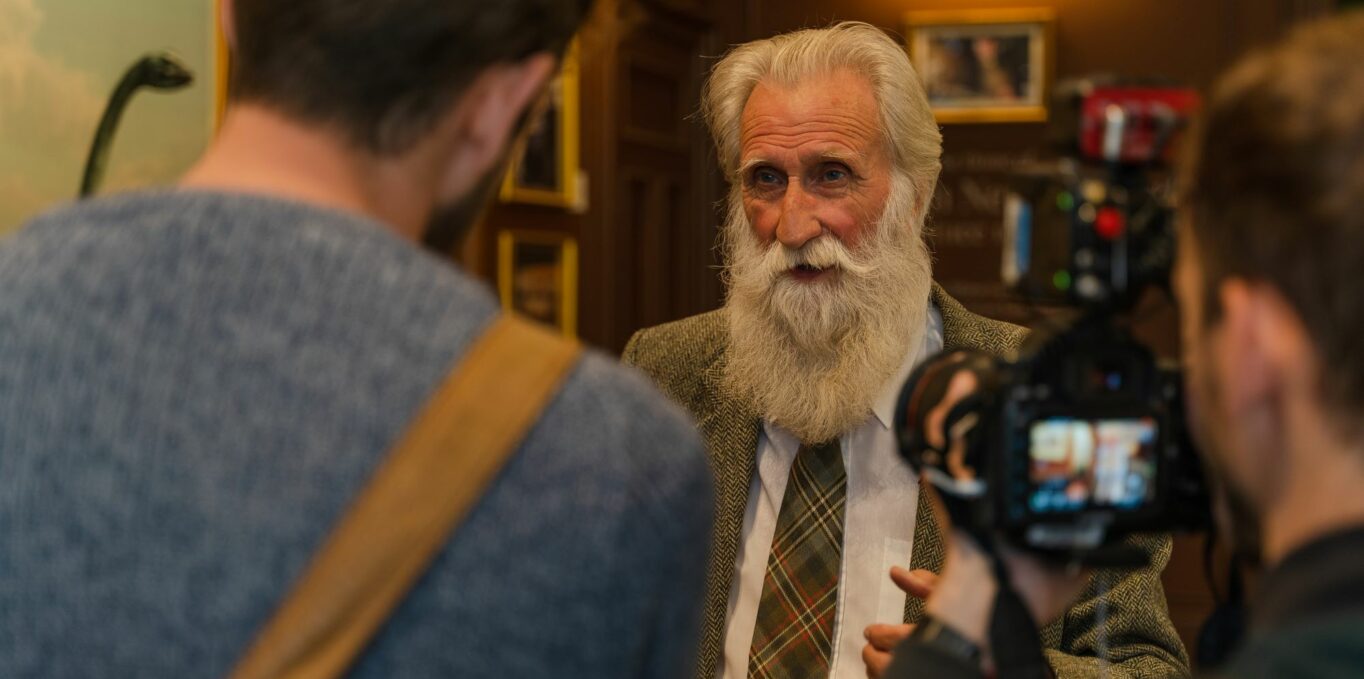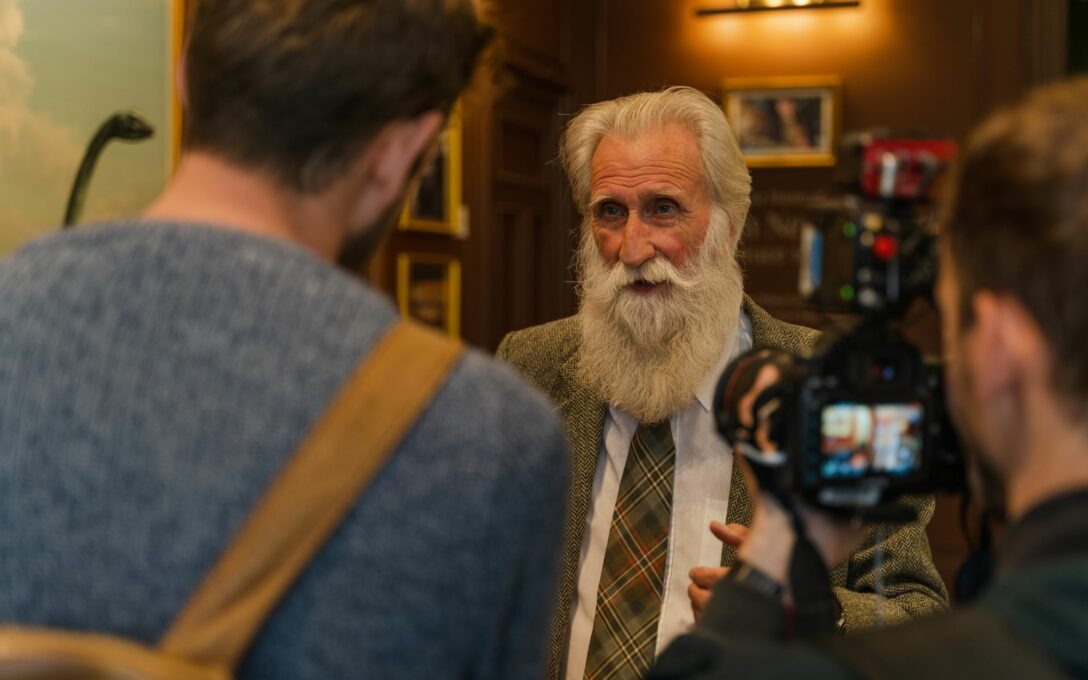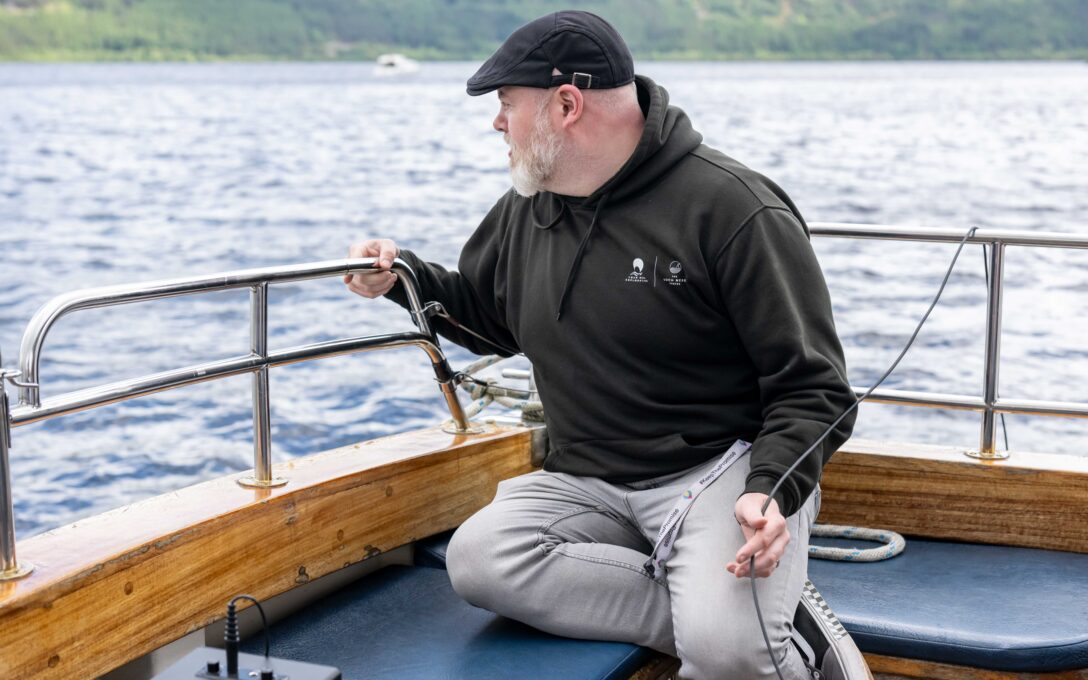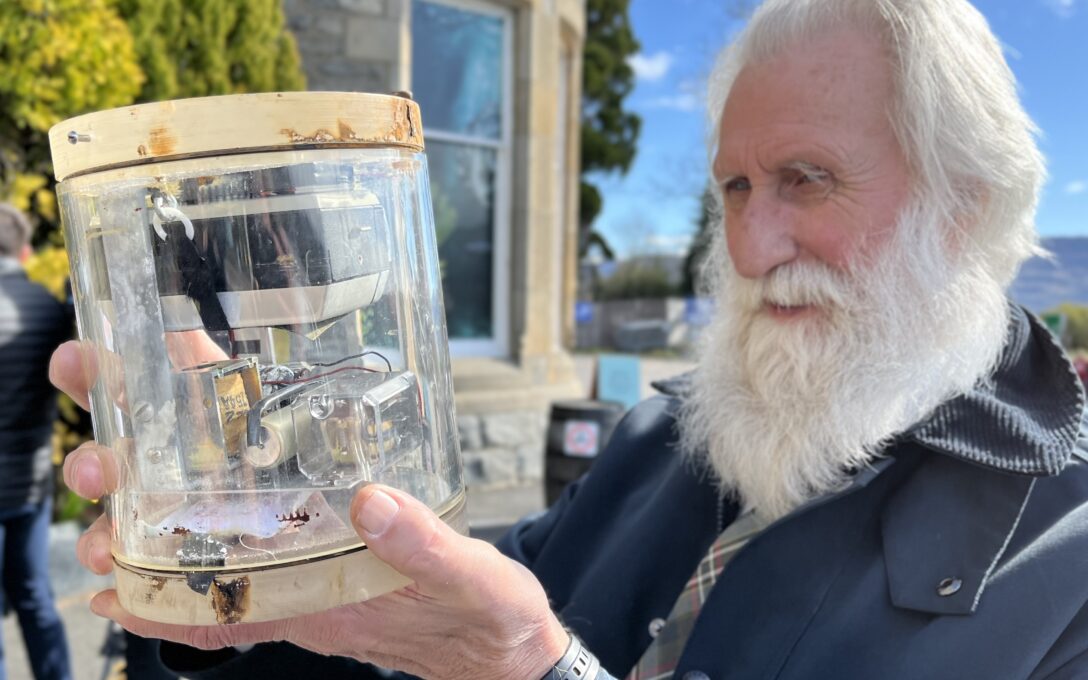In 1975 we introduced a much safer idea than the submersible camera hide Machan, but on the same principle; the Underwater Video Camera featured in The Search For Truth pointed straight upwards with a wide angle lens. By 1976 our expedition members were safely in a tent on shore over 300m away watching the screen and ready to record intrusions of interest. In the clear water of Loch Morar, we could obtain ranges of over 30m with a similar width of coverage across the surface.
This ‘silhouette technique’ vastly extended the volume of water under surveillance but also would have made it possible to see the whole-body outline of a large creature. This would have been much more useful in identification than the conventional flash illuminated time lapse photography used at Loch Ness with its controversial claims of isolated ‘body parts’.
Additionally, because the video recorded movement, images such as silt swirls and tree stumps were not frozen out of context and misinterpreted as at Loch Ness. We also hoped that a creature’s movements would yield clues to identity. Reptiles and fish undulate horizontally, mammals vertically.

